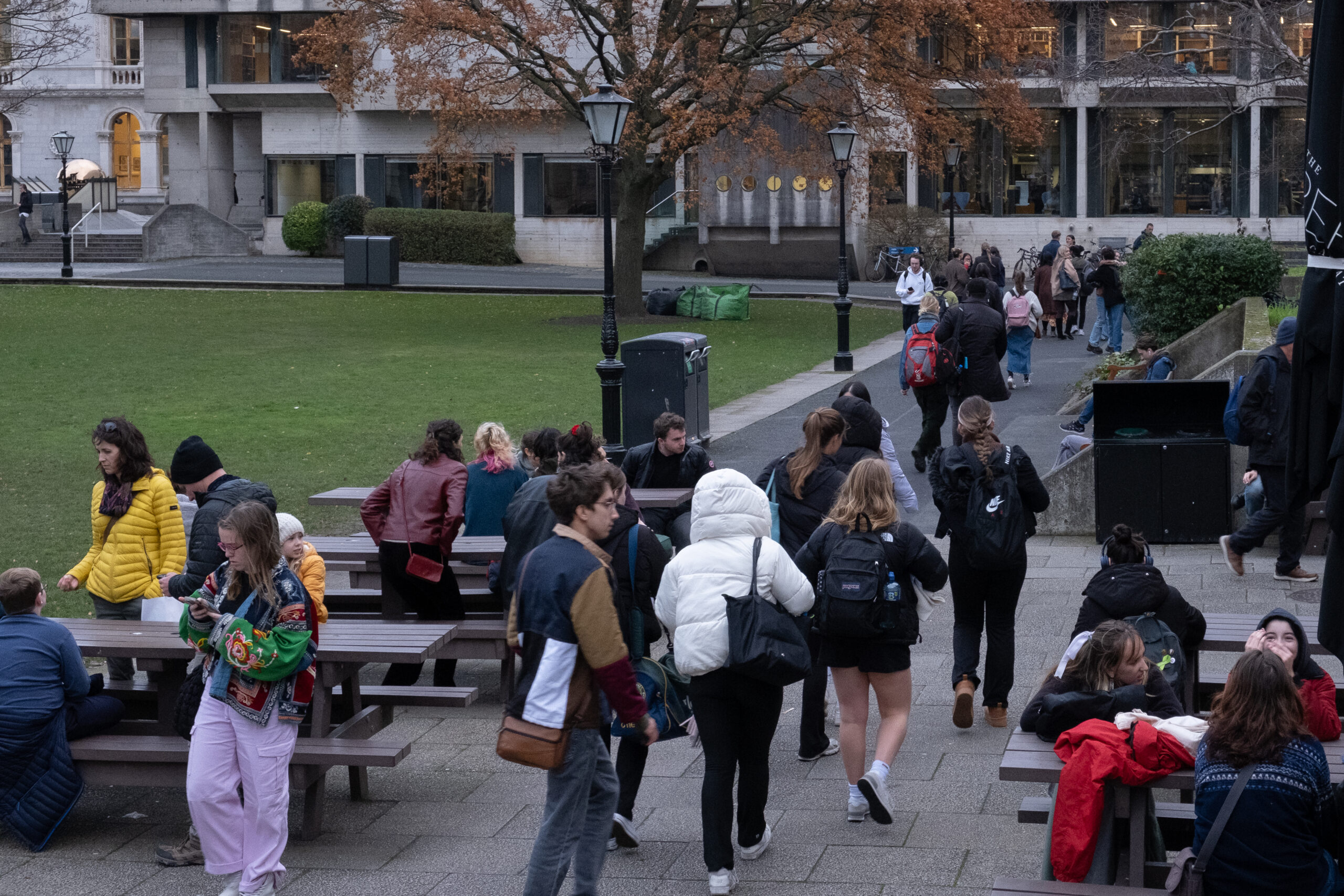College: the era of new beginnings and a new wardrobe, according to the phenomenon which is Fashion Soc’s Campus Couture (at least if you can afford the gentrified vintage shops).
As each new student takes their first step on campus, many cast off the shackles of conformity. Gone are the days of the catholic school uniform, in its replacement: a new canvas for reinvention. One walks around campus and an amalgamation of different textures, patterns, colours, and style beg for attention, a kaleidoscope of different outfits, some similar and others stark in contrast.
How we dress has always carried a certain weight. It’s our outward projection to the world, our first impression, our armour, a reflection of the person we aspire to be. Fashion is a distinctive medium of art which undeniably infiltrates our everyday life. To those of you who may scoff at this, I refer you to the revolutionary cerulean sweater monologue in Devil Wears Prada, ultimately proving the argument that the decision to not care about fashion and what you wear is as conscious as pouring over your outfit in the mirror for hours.
“Subcultures are sourced, regenerated, and often reduced under a ‘microtrend’ banner.”
Yet, trends have risen in the chronically online age alongside the demise of subcultures. The desire for the categorisation of trends permeates throughout life. The romanticism of mundanity, possibly accelerated by being stuck inside for two years due to Covid, has borne a time of cores, aesthetics and trends which present an often-confusing restriction to exploration. Subcultures are sourced, regenerated, and often reduced under a ‘microtrend’ banner. The lines between varied subcultures have blurred, with campus as a perfect example of how different elements of subcultures have been acquired into the mainstream. Doc Martens, once a shoe signifying grunge rebellion, is now a staple in the wardrobe of any stereotypical Trinity student, extra points if they’re a Phoebe Bridgers fan.
The pace in trend cycles has rapidly risen. Regarding microtrends, the time taken between adding an item to your online basket is one step closer to the gradual expiry date and death of the clothes. The 20-year trend cycle asserting that it takes at least 20 years for a past trend to re-enter the present fashion world has been all but forgotten. In its place all trends simultaneously happening at once. That said, the co-opting of subcultures outside the originally intended cliques can be seen as the blurring of lines within the atmosphere of acceptance. It allows the youth of today to play around with clothes and fashion without choosing an item representative of permanency in their self-identification.The chase for originality has led unsurprisingly to a surge in vintage and second-hand buying with frequent calls by consumers for more sustainable clothing production.
“Capitalism, that unpleasant, if stylish, big bad wolf once again rears its ugly head.”
Capitalism, that unpleasant, if stylish, big bad wolf once again rears its ugly head. Uniqueness and the desire for the selfish pleasure of uttering the line, “Oh, it’s actually thrifted” has changed the nature in how we shop, scouring charity shops, your mom’s old vintage and the rise in online outlets such as Depop. Fashion’s accessibility within an oversaturated market had been absorbed by monetisation with overconsumption and greenwashing. Before, subcultures produced trends but due to the commodification of goods, this operates in reverse as large corporations manipulate the media to convince consumers their product is essential. As trends and product availability work in tangent with one another, the fashion market goes into over production to meet the ever-increasing demand for clothes. College students have become both victims and culprits of this environment, vulnerable to the promises of sustainability. We act as targets for companies who exploit the term ‘sustainable’ when their production is anything but. Thrifting, an alternative to fast fashion has become a trend upon itself, which has resulted in overpricing. Depop, although a platform for entrepreneurship, encourages the excessive hauls which engulf our social media and only further to distinguish socio-economic disparities .
“If you drop fifty bucks for a Tola sweater, you too can be absorbed into the mass of happy, thriving and emotionally intelligent arts students.”
Fashion, a visual representation of college, allows for experimentation, self- discovery and fun, whether it’s gaining inspiration from the looks that pass you by or frantically swiping through the weekly campus couture post. Still, this view can be, at times, ignorantly simplistic, failing to address the exclusionary seams of fashion in today’s world. It is impossible to understate the importance of conscious buying amid innovation in layering, wearing, and styling for success. That said, it is also impossible to deny its appeal. If you drop fifty bucks for a Tola sweater, you too can be absorbed into the mass of happy, thriving and emotionally intelligent arts students.






